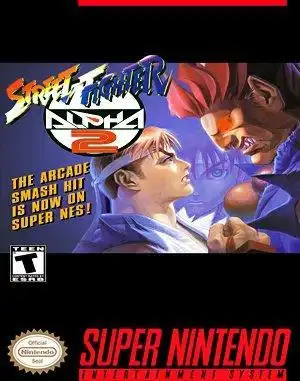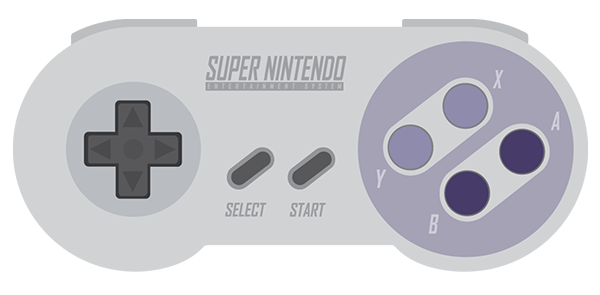For many of us growing up with the Super Nintendo, Street Fighter II was the fighting game. It dominated arcades and living rooms. But then came something different, something faster, something... Alpha. When Street Fighter Alpha 2 landed on the SNES, it felt like Capcom was pushing the console to its absolute limits. This wasn't just an update; it was a whole new beast.
Let's dust off that purple and grey console and remember what made the Street Fighter Alpha 2 SNES port a memorable, if slightly flawed, chapter in 16-bit fighting history.
The Alpha Difference: More Than Just New Faces
Street Fighter Alpha 2 (or Street Fighter Zero 2 in Japan) wasn't just Street Fighter 2.5. It introduced the "Alpha" system, which brought a new level of strategic depth.
Key features that set it apart:
- Custom Combos (Originals): While perhaps simplified on SNES compared to arcade, the idea of chaining moves was central.
- Super Combo Gauge: This was huge! Filling the gauge allowed for devastating Super Combos, adding a layer of anticipation and payoff to fights.
- Counter-Alpha: Blocking and immediately countering with a special move.
- Mid-air Blocking: Changed aerial combat significantly.
These mechanics felt fresh and exciting, moving beyond the relatively simpler special-move-and-super-move structure of the SFII era.
Pushing the 16-bit Hardware
Bringing a game as visually dynamic and feature-rich as Street Fighter Alpha 2 to the Super Nintendo was an ambitious feat. And in many ways, it succeeded admirably.
- Pixel Art Perfection: The character sprites were large, detailed, and beautifully animated. Backgrounds were vibrant and full of life, showcasing the SNES's graphical capabilities.
- Killer Soundtrack: The music was fantastic, capturing the energy and mood of each stage and character. Ryu's theme, in particular, was a standout.
- Character Roster: Packing 18 distinct fighters onto a single cartridge was impressive for the time. Fan favorites returned alongside newcomers like Sakura, Rolento, and Gen.
For a console port, especially on a cartridge with limited memory compared to CD-based systems, SFA2 SNES looked and sounded phenomenal.
The SNES Port Experience: Hits and Misses
Playing Street Fighter Alpha 2 on the Super Nintendo felt surprisingly close to the arcade experience in terms of core gameplay and visuals. The controls were tight, responsive, and felt natural on the classic SNES controller. Pulling off special moves and even attempting Super Combos felt satisfying.
However, the port wasn't without its compromises. The most famous, or infamous, being:
The Dreaded "Fight!" Pause
Ah, the pause. After the announcer dramatically declared "Fight!", there would be a noticeable, sometimes frustrating, delay before the round actually began. This was clearly a loading or decompression moment, necessary to get all that detailed character and stage data ready on the limited SNES hardware. While short, it broke the flow and is a common point of criticism when discussing this specific port.
Compared to Super Street Fighter II on the SNES, which felt incredibly smooth and fast, Alpha 2 had this undeniable hitch. Some players felt the overall speed was slightly reduced compared to the arcade or more powerful console versions.
Alpha 2 SNES vs. Its Siblings
How does the Street Fighter Alpha 2 SNES port stack up against other versions or even other Street Fighter games on the same console?
- Vs. Arcade: Naturally, the arcade was superior in terms of loading, speed, and potentially visual fidelity in motion. But the SNES port was a valiant effort, capturing the essence.
- Vs. PlayStation/Saturn: These CD-based versions were generally considered more arcade-accurate due to better loading and more frames of animation.
- Vs. SFII SNES Games: Alpha 2 offered a more complex and modern fighting system than Street Fighter II, Turbo, or Super. While Super Street Fighter II on SNES is often lauded for its speed and polish, Alpha 2 brought the next generation of mechanics to the console. It felt like a significant leap forward despite the technical trade-offs.
Is It Worth Revisiting Today?
Absolutely. Playing Street Fighter Alpha 2 SNES today is a fantastic trip down memory lane. It's a testament to what developers could squeeze out of 16-bit hardware and offers a unique perspective on the evolution of the Street Fighter series.
While modern fighting games are infinitely more complex and arcade-perfect ports are readily available via digital stores or emulation (like playing the arcade ROM via RetroArch), there's a certain charm to experiencing this ambitious port on its original hardware or via accurate SNES emulation. It highlights the compromises and triumphs of bringing cutting-edge arcade experiences home in the mid-'90s.
It's a great way to appreciate the Alpha system and see just how much detail Capcom packed into that little gray cartridge, even with that unavoidable pause at the start of every round.
Frequently Asked Questions
- How many characters are in Street Fighter Alpha 2 on SNES? The SNES port features 18 playable characters.
- Did the SNES version have loading times? Yes, the most notable "loading" manifests as a brief pause after the announcer says "Fight!" at the start of each round.
- How does it compare to Super Street Fighter II on SNES? Super Street Fighter II is often considered faster and smoother on SNES, while Street Fighter Alpha 2 brings a more advanced fighting system (Alpha Counters, Super Combos) and different characters, albeit with the famous loading pause.
- Is Street Fighter Alpha 2 on SNES good? Despite the loading pause, it's generally considered a very good port for the hardware, praised for its graphics, sound, and successful implementation of the Alpha system mechanics.
Conclusion
Street Fighter Alpha 2 on the Super Nintendo was a bold statement. It proved that the aging 16-bit console still had fight left in it, capable of handling a game far more complex than its predecessors. While the "Fight!" pause remains a quirky footnote, it doesn't detract significantly from what was, and still is, a fantastic fighting game experience. For retro gamers, it's an essential part of the SNES fighting game library and a nostalgic reminder of a time when home ports were ambitious, sometimes imperfect, but always exciting.


